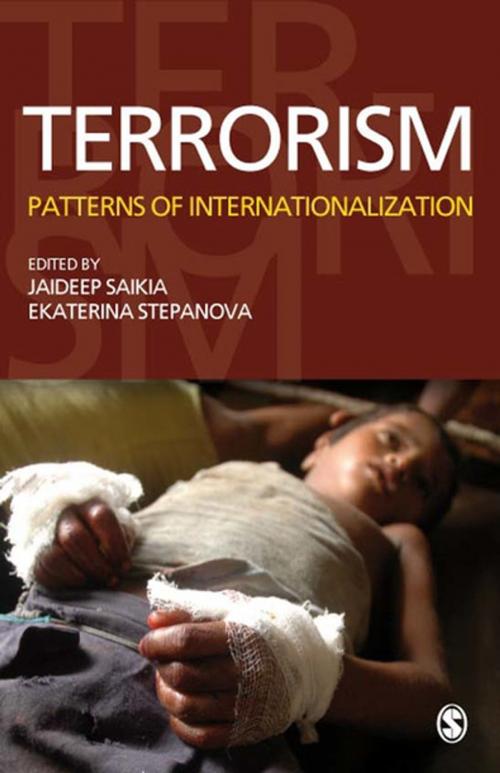Terrorism
Patterns of Internationalization
Business & Finance, Economics, International, Nonfiction, Social & Cultural Studies, Social Science, Crimes & Criminals, Criminology| Author: | ISBN: | 9789352802272 | |
| Publisher: | SAGE Publications | Publication: | April 22, 2009 |
| Imprint: | Sage Publications Pvt. Ltd | Language: | English |
| Author: | |
| ISBN: | 9789352802272 |
| Publisher: | SAGE Publications |
| Publication: | April 22, 2009 |
| Imprint: | Sage Publications Pvt. Ltd |
| Language: | English |
Terrorism: Patterns of Internationalization provides a systematic analysis of the concepts of internationalization of terrorism. It looks into the stages and processes through which terrorism has developed in various parts of the world and binds together the facts to present a comprehensive picture of the distinguishing features that characterize the internationalization of terrorism-from local to global. Through 11 well-researched chapters, leading experts on terrorism from across five continents express their views and analyze the main patterns, stages, and levels of internationalization of different types of terrorism in a broad cross-regional perspective.
The book challenges a number of conventional patterns of analysis and underlines the importance of visualizing terrorism as an act driven by political motivation, notwithstanding the fact that it is manifested through ideological or religious sentiments. It also analyzes the various tactics used by different terrorist organizations in different regions and distinguishes terrorists from other non-state actors. It dwells on the dangerous implications of the internationalization of terrorism and emphasizes the need to develop a research methodology which can help understand the current conceptualization of the phenomenon and bring forward analytical solutions.
This will be an important sourcebook for the military, the police, law enforcement agencies, and government training institutes. In addition, it will also benefit political analysts and professionals such as counter-insurgency and anti-terrorism experts.
Terrorism: Patterns of Internationalization provides a systematic analysis of the concepts of internationalization of terrorism. It looks into the stages and processes through which terrorism has developed in various parts of the world and binds together the facts to present a comprehensive picture of the distinguishing features that characterize the internationalization of terrorism-from local to global. Through 11 well-researched chapters, leading experts on terrorism from across five continents express their views and analyze the main patterns, stages, and levels of internationalization of different types of terrorism in a broad cross-regional perspective.
The book challenges a number of conventional patterns of analysis and underlines the importance of visualizing terrorism as an act driven by political motivation, notwithstanding the fact that it is manifested through ideological or religious sentiments. It also analyzes the various tactics used by different terrorist organizations in different regions and distinguishes terrorists from other non-state actors. It dwells on the dangerous implications of the internationalization of terrorism and emphasizes the need to develop a research methodology which can help understand the current conceptualization of the phenomenon and bring forward analytical solutions.
This will be an important sourcebook for the military, the police, law enforcement agencies, and government training institutes. In addition, it will also benefit political analysts and professionals such as counter-insurgency and anti-terrorism experts.















